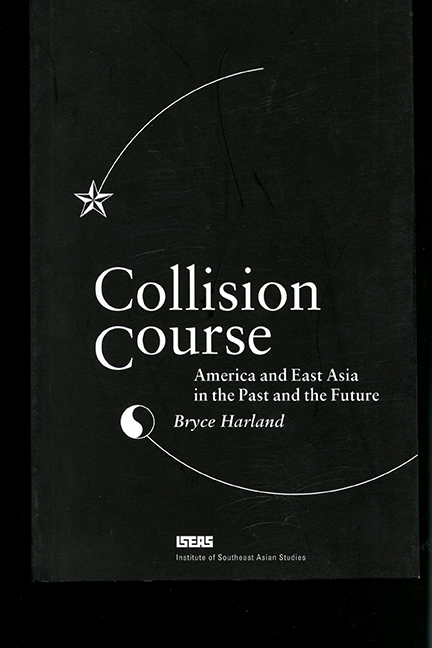Book contents
- Frontmatter
- Dedication
- Contents
- PREFACE
- INTRODUCTION
- CHAPTER 1 The West Strikes Asia
- CHAPTER 2 America Asserts Itself
- CHAPTER 3 Turmoil in China Leads to War in the Pacific
- CHAPTER 4 Cold War Sets In
- CHAPTER 5 War in Korea Deepens Confrontation
- CHAPTER 6 Vietnam – Failure, and Success
- CHAPTER 7 The Anti-Soviet Coalition
- CHAPTER 8 Japan Challenges America Again
- CHAPTER 9 Smaller Dragons Join In
- CHAPTER 10 China against a Wall
- CHAPTER 11 The Asian Diaspora
- CHAPTER 12 Regionalism in Asia
- CHAPTER 13 Whither America?
- Postscript: The Eye of the Viewer
- Bibliography
- Index
- The Author
- Frontmatter
- Dedication
- Contents
- PREFACE
- INTRODUCTION
- CHAPTER 1 The West Strikes Asia
- CHAPTER 2 America Asserts Itself
- CHAPTER 3 Turmoil in China Leads to War in the Pacific
- CHAPTER 4 Cold War Sets In
- CHAPTER 5 War in Korea Deepens Confrontation
- CHAPTER 6 Vietnam – Failure, and Success
- CHAPTER 7 The Anti-Soviet Coalition
- CHAPTER 8 Japan Challenges America Again
- CHAPTER 9 Smaller Dragons Join In
- CHAPTER 10 China against a Wall
- CHAPTER 11 The Asian Diaspora
- CHAPTER 12 Regionalism in Asia
- CHAPTER 13 Whither America?
- Postscript: The Eye of the Viewer
- Bibliography
- Index
- The Author
Summary
The relationship between America and East Asia is attracting attention all round the world: its future is one of the great issues of our time. The purpose of this book is to put it in a historical perspective — to see how the relationship has developed, and where it seems to be leading. It is based on a belief in the relevance of history — which is, after all, only an attempt to understand human experience in the past. If we cannot leam from experience, we may find ourselves repeating it.
In the past half century East Asia has been transformed, from one of the poorest and most turbulent parts of the world into one of the most rapidly developing, and one of the more peaceful. America has played a critical part in this transformation, by providing ideas, money and markets, as well as security. Now the terms of the relationship are changing. Asian countries are competing vigorously with America in the economic field. Their fast growth has given them the confidence to assert themselves, and to uphold the virtues of their own heritage Attempts by the United States to bring them into line with its own values and interests have provoked resistance. They have generated tension with one Asian country after another, and made them more conscious of what they have in common. Rancour and hostility have come to qualify relationships that were formerly characterised mainly by goodwill, or at least tolerance. America remains confident that the deep divisions within Asia will ensure continued need for America's military presence. That confidence may not always be as well founded as it has been in the past.
This book sets out to trace the evolution of America's relations with East Asia, and to see where past expenence has a bearing on present problems. It takes a long view: the aim is to set the present in the context of the past, and not just the recent past.
- Type
- Chapter
- Information
- Collision CourseAmerica and East Asia in the Past and the Future, pp. ix - xiPublisher: ISEAS–Yusof Ishak InstitutePrint publication year: 1986

